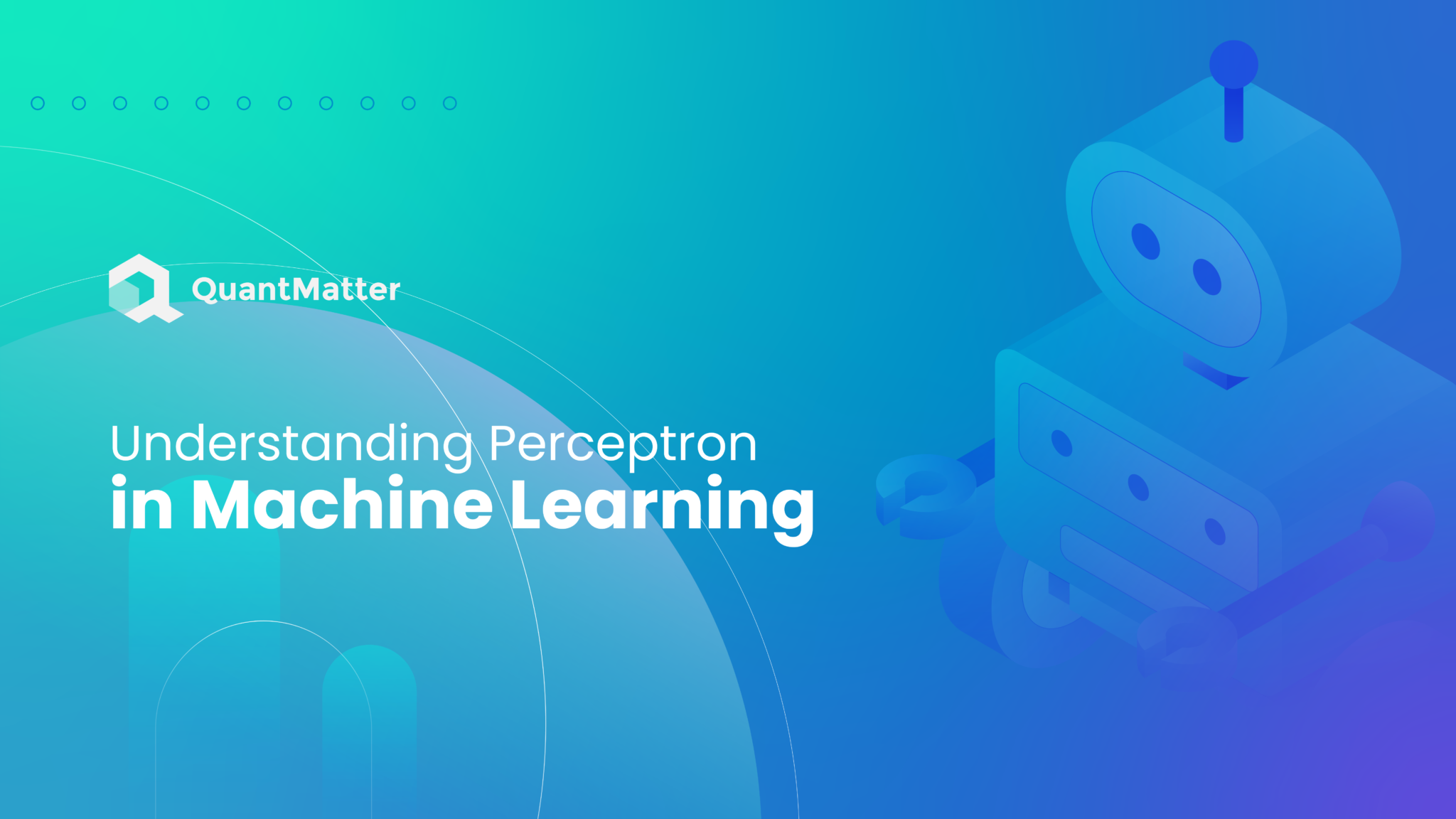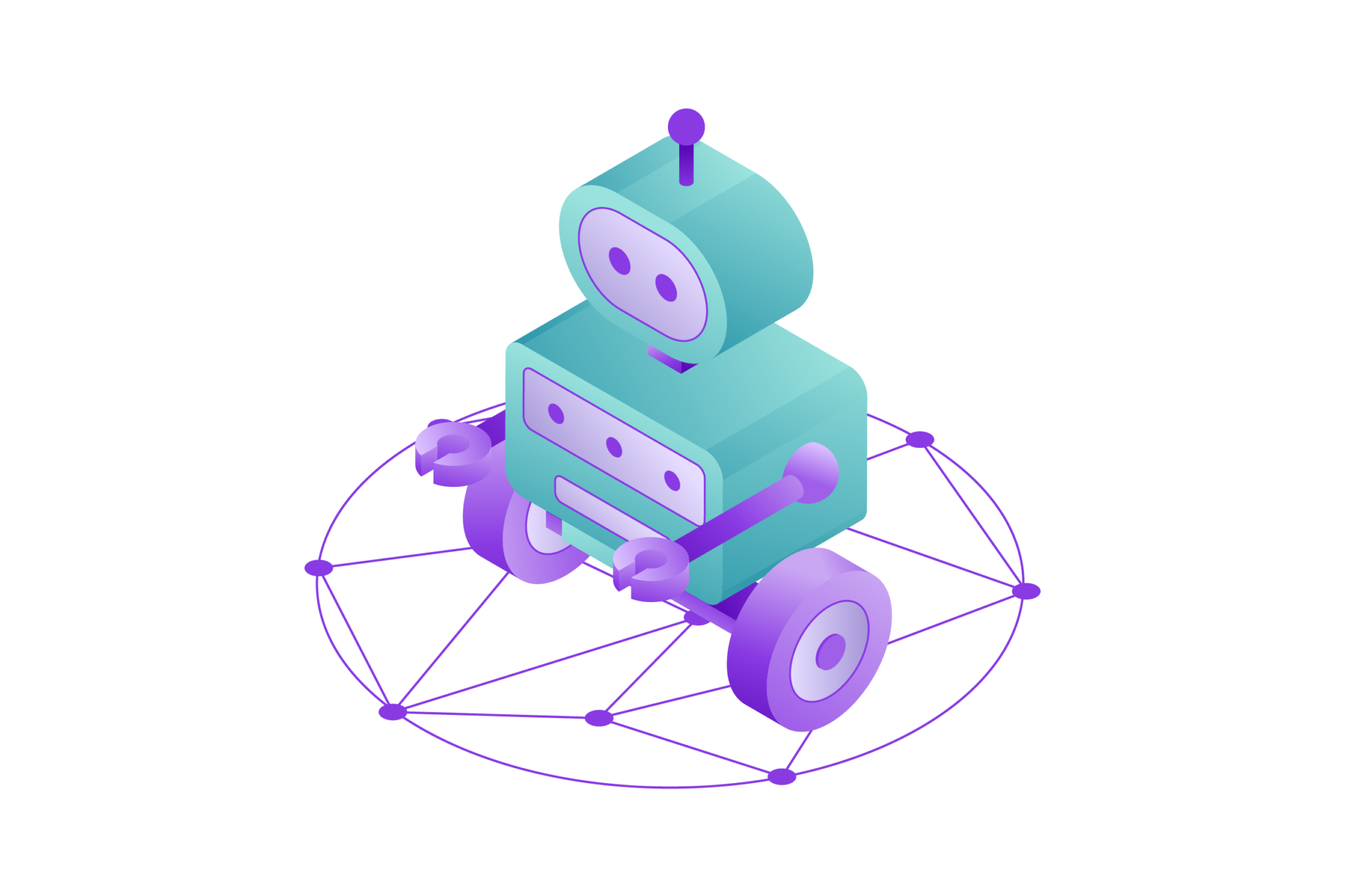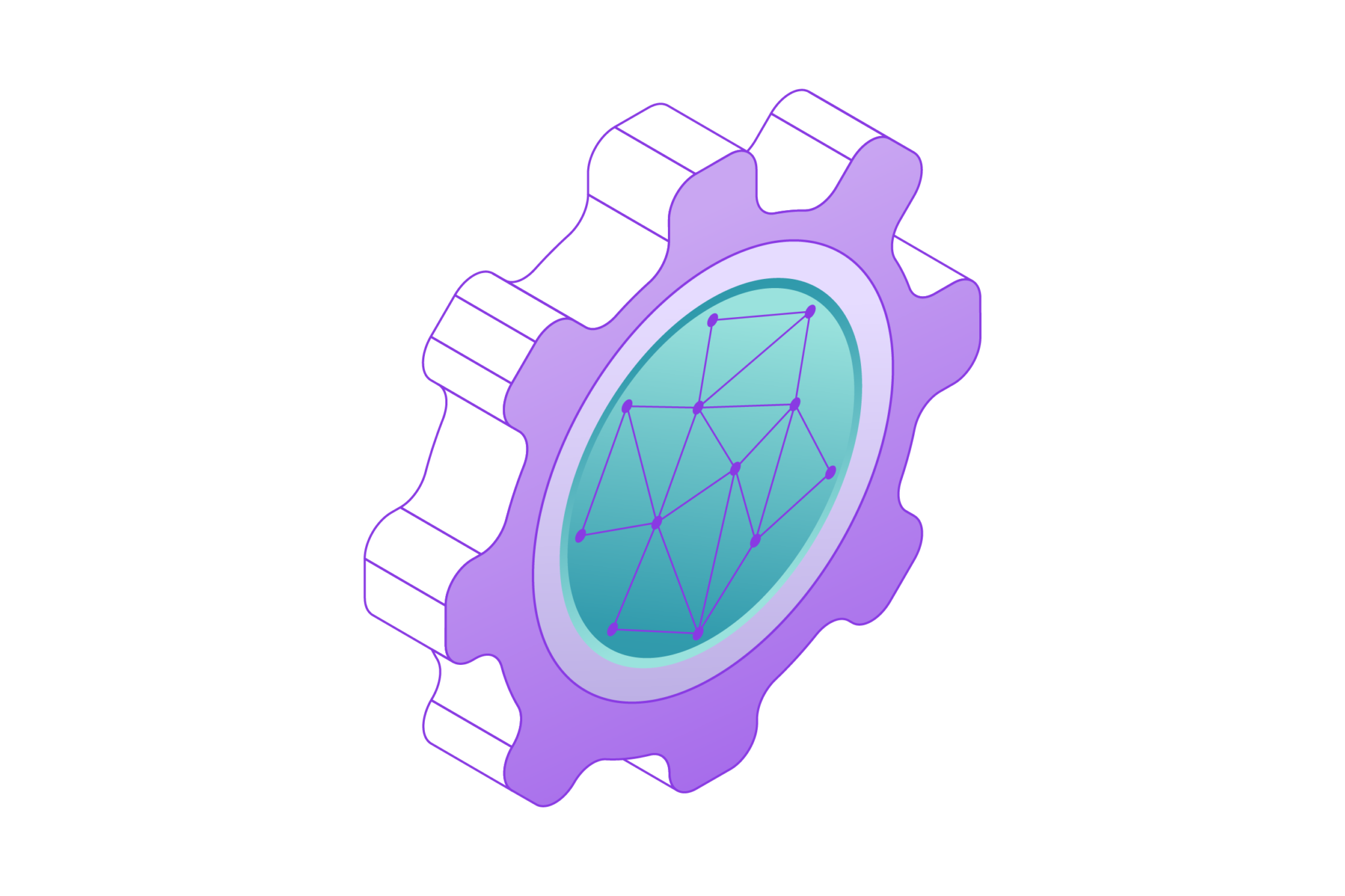
The perceptron is one of the foundational building blocks of machine learning. Developed in the late 1950s, it represents the simplest type of artificial neural network, yet its concept underpins the more complex systems used in today’s AI technologies. In this guide, we will explore what a perceptron is, how it functions, and why it remains relevant in the fast-evolving field of machine learning as we move into 2024.
Machine learning has revolutionized numerous industries, from automated driving to personalized medicine, and the perceptron model has been at the heart of this transformation. It is a linear classifier — that is, a model that categorizes inputs into two distinct classes. This capability makes it a critical tool for tasks that require decision-making such as spam detection or image classification.
Understanding the mechanics of the perceptron can provide insight into deeper machine learning concepts. It’s designed to mimic the way a human brain processes information, albeit in a much simplified form. By the end of this guide, you’ll have a clearer understanding of how this technology works and how it can be applied in various fields. Whether you’re a student, a professional, or just curious about artificial intelligence, this comprehensive overview will equip you with the foundational knowledge you need.
What is a Perceptron?

The perceptron is a foundational model in the field of artificial neural networks, representing the simplest form of a feed-forward neural network. It was designed to mimic the decision-making process of a biological neuron. A perceptron consists of several components: input weights, a bias (or threshold), and an activation function, which is typically a simple step function.
In operation, the perceptron takes multiple input signals, each multiplied by its respective weight—a parameter indicating the importance or strength of the input. These weighted inputs are then summed together, often with an added bias term. This bias adjusts the range within which the perceptron’s weighted sum must fall for it to produce an activation.
Also Read: Store of Value: Definitions and Practical Examples
The sum of the weighted inputs and the bias is then passed through the activation function. If this value exceeds a certain threshold, the perceptron “fires” (outputs a 1), otherwise it does not fire (outputs a 0). This binary output capability allows the perceptron to make simple decision-like distinctions, suitable for binary classification tasks.
Training a perceptron involves adjusting its weights and bias based on the errors in its predictions. This training process typically uses a method known as the perceptron learning rule, an early form of learning algorithm. By iteratively processing a set of training data and adjusting the parameters accordingly, the perceptron gradually learns to map input data to correct outputs, enhancing its decision-making accuracy over time.
Training the Perceptron

Training a perceptron involves adjusting its weights and bias based on the errors it makes as it learns. The perceptron learning rule, also known as the delta rule, is a simple algorithm used to update these parameters. During training, the perceptron receives inputs with known outputs, and each time it predicts incorrectly, the weights are adjusted to reduce the error.
The adjustments are made by taking the difference between the actual output and the predicted output and using this error to slightly change the weight of the inputs. This process is repeated for many iterations over the training dataset until the perceptron model accurately predicts the output, or until a maximum number of iterations are reached.
A perceptron’s main function is to take several binary inputs, weigh them, sum them up, and then pass the output through a threshold function to produce a single binary output. This makes it suitable for binary classification tasks.
Training a perceptron involves adjusting the weights assigned to the inputs. This process is typically achieved through the Perceptron Learning Algorithm, which iteratively adjusts the weights based on the prediction errors made by the model in previous iterations. The basic steps of the training process are as follows:
- Initialization: Start with random values for the weights.
- For each training sample:
- Compute the output based on current weights.
- If the output is correct, move to the next sample.
- If the output is incorrect, adjust the weights. The adjustment is made by adding or subtracting a proportion of the input value to the weight, where the proportion is determined by the learning rate and the error (difference between predicted and actual output).
- Iteration: Repeat the process for a fixed number of iterations or until the weights converge (i.e., errors on the training set are minimized).
The learning rate is a crucial parameter in the training process. It controls how much the weights are adjusted during each step. A too-small learning rate makes the learning process slow, while a too-large learning rate can lead to erratic changes and instability in the learning process.
The perceptron can only solve problems that are linearly separable — that is, there exists a linear boundary that can classify all the training samples correctly. For more complex problems that are not linearly separable, a single perceptron is insufficient, and more complex architectures like multi-layer perceptrons or other types of neural networks are required.
Applications of the Perceptron

The perceptron is one of the simplest types of artificial neural networks and is foundational in the study of machine learning. Here are some notable applications and contexts where the perceptron model is particularly significant:
Pattern Recognition
Perceptrons, one of the earliest forms of neural networks, are primarily designed to carry out binary classifications, making them adept at simple pattern recognition tasks. They are particularly useful in scenarios where the goal is to recognize forms that have clear and distinct characteristics, such as handwritten digits or basic geometric shapes. By processing input images as a series of pixels, perceptrons evaluate the presence or absence of specific features to classify these images accurately, making them fundamental in the development of machine learning applications related to image recognition.
Linear Binary Classification
The perceptron operates as a linear classifier, effectively categorizing data into two distinct groups based on a linear decision boundary. This attribute makes it particularly effective in fields where decisions are binary, such as in finance for predicting stock movements (up or down) or in economics for classifying economic indicators. Its ability to draw a direct line separating categories in a dataset is a foundational technique used to understand and build more complex classification models.
Foundational Learning Algorithms
Despite its simplicity, the perceptron has played a crucial role in the evolution of artificial intelligence, particularly in understanding the architecture of more intricate neural networks. It exemplifies foundational principles of neural learning, such as the adjustment of weights and biases towards reducing error. Although perceptrons themselves are trained using relatively straightforward rules, they have paved the way for understanding more sophisticated learning processes like backpropagation used in training deep neural networks.
Teaching and Learning Tool
Due to its straightforward nature, the perceptron is an excellent educational tool for introducing students to the concepts underlying neural networks and more general artificial intelligence paradigms. It serves as a practical model to demonstrate the basic mechanics of how machines learn from data, adjust their computations, and make predictions. This simplicity aids in demystifying more complex algorithms and techniques in machine learning and AI.
Neurological Inspiration
The design of the perceptron was inspired by biological neurons in the human brain, mimicking the way neurons process information through electrical signals. This biological inspiration has not only advanced our understanding of how the brain functions but has also spurred significant interest and research in biologically inspired computing models. This has led to the development of sophisticated deep learning architectures that attempt to replicate more complex aspects of human cognition.
Feature Learning
In configurations where perceptrons are layered to form multi-layer networks, they gain the capability to perform more complex tasks by learning and extracting salient features from input data. These features, which represent more abstract representations of the input, enable the network to perform sophisticated decision-making tasks. This aspect of perceptron learning is crucial for developing AI systems that can understand and interpret vast amounts of data with minimal human oversight.
While modern applications typically require more complex models due to the nonlinear nature of most real-world data, the perceptron remains a critical stepping stone in the evolution of neural network architectures and machine learning techniques. Its simplicity allows for an easy-to-understand demonstration of how neural networks can learn from data, making it a valuable educational tool.
Also Read: What Is a Validator? Definition and Impact
The Perceptron’s Limitations and Solutions
The perceptron, originally conceived by Frank Rosenblatt in 1957, is a type of artificial neural network and one of the earliest models developed in the field of machine learning. It is designed to classify inputs into one of two possible categories, making decisions by calculating a weighted sum of the inputs and passing the result through a threshold function.
Limitations of the Perceptron:
- Linear Separability: The fundamental limitation of a perceptron is that it can only classify data that is linearly separable. This means it can only draw a straight line (or hyperplane in higher dimensions) to separate data points of different classes. If the data cannot be separated this way, the perceptron fails to converge and cannot find a solution.
- Binary Classification: Perceptrons are limited to binary classification tasks (i.e., two classes). They cannot directly handle multi-class categorization, although some extensions, like the one-vs-all strategy, have been developed to cope with more classes using multiple perceptrons.
- Absence of Hidden Layers: The standard perceptron consists of only input and output layers, with no hidden layers. This architectural simplicity restricts its ability to capture complex patterns or relationships in data, unlike more advanced neural networks that include multiple hidden layers.
- No Probabilistic Interpretation: Perceptrons do not output probabilities but rather a class label directly. This makes it challenging to gauge uncertainty or the confidence level of predictions.
Solutions and Advances:
To overcome the limitations of traditional perceptrons, several enhancements and alternatives have been developed:
- Multi-Layer Perceptrons (MLPs): By introducing one or more hidden layers between the input and output layers, MLPs enable the modeling of more complex functions. These layers can learn non-linear relationships, vastly expanding the types of data the model can handle.
- Kernel Trick: Used in support vector machines, the kernel trick can also be applied to perceptrons to handle non-linearly separable data. This approach involves mapping input features into a higher-dimensional space where a linear separation is possible.
- Softmax Function: For multi-class classification, the softmax function can replace the threshold function in the output layer of an extended perceptron model, providing probabilities for each class and allowing the model to handle more than two classes.
- Ensemble Methods: Techniques like boosting can be used to combine multiple perceptrons to improve performance and robustness. This approach involves training multiple models and aggregating their outputs to enhance the final decision-making process.
These enhancements not only help mitigate the intrinsic limitations of the original perceptron model but also pave the way for the development of more sophisticated and capable neural network architectures in machine learning.
Future of the Perceptron in Modern AI
The perceptron, one of the earliest forms of artificial neural networks introduced by Frank Rosenblatt in 1958, serves as a fundamental building block for understanding more complex neural network models. In modern AI, despite the evolution of sophisticated architectures like deep learning and convolutional networks, the perceptron has not become obsolete. It retains significant educational value, providing a straightforward example for those new to the field of machine learning. This helps in illustrating the core concepts of how neurons and weights operate within a network.
In practical applications, the simplicity and efficiency of the perceptron make it particularly useful in situations where computational resources are limited or where decisions need to be made rapidly. For instance, embedded systems in real-time applications may utilize perceptrons due to their lower computational overhead compared to more complex models. Additionally, the perceptron can serve as a stepping stone for implementing and understanding more advanced algorithms, offering a clear example of the foundational principles of neural processing and learning dynamics in AI systems.
Thus, while it is true that advanced neural networks have outpaced the perceptron in handling complex and layered data relationships, the perceptron continues to play a critical role both as an educational tool and in specific practical applications where its attributes of simplicity and speed are advantageous.
Conclusion
The perceptron model, despite its simplicity, plays a crucial role in the field of machine learning. It serves as the stepping stone to understanding more complex neural networks and machine learning techniques. As we continue to advance in technology and develop more sophisticated AI tools, the principles of the perceptron remain relevant.
In 2024 and beyond, as machine learning becomes even more integrated into our daily lives and industries, understanding these fundamental concepts will be essential. The perceptron offers a gateway into the broader world of AI, providing the basic knowledge needed to engage with and develop future technologies.
Lastly, as we delve deeper into AI research, the lessons learned from the perceptron model will undoubtedly contribute to the development of more efficient and capable AI systems, continuing its legacy as a cornerstone of machine learning education and application.
Disclaimer: The information provided by Quant Matter in this article is intended for general informational purposes and does not reflect the company’s opinion. It is not intended as investment advice or a recommendation. Readers are strongly advised to conduct their own thorough research and consult with a qualified financial advisor before making any financial decisions.

Joshua Soriano
As an author, I bring clarity to the complex intersections of technology and finance. My focus is on unraveling the complexities of using data science and machine learning in the cryptocurrency market, aiming to make the principles of quantitative trading understandable for everyone. Through my writing, I invite readers to explore how cutting-edge technology can be applied to make informed decisions in the fast-paced world of crypto trading, simplifying advanced concepts into engaging and accessible narratives.
- Joshua Soriano#molongui-disabled-link
- Joshua Soriano#molongui-disabled-link
- Joshua Soriano#molongui-disabled-link
- Joshua Soriano#molongui-disabled-link
